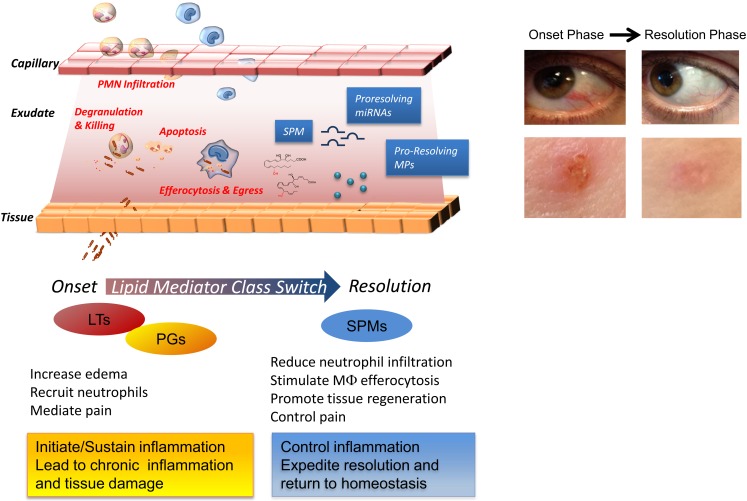Figure 1.
Cellular and molecular mediators in acute inflammation and resolution. Surgical intervention, tissue injuries, or microbial infections in vascularized tissues evoke a rapid acute inflammatory response characterized by a rapid exudate formation with edema, leukocyte infiltration, and serum proteins. Polymorphonuclear leukocytes (PMN) are among the first responders that fight microbes followed by monocytes that differentiate locally into pro-resolving macrophages (MΦs). Efferocytosis of apoptotic PMN and microbes by pro-resolving MΦs and subsequent egress via lymphatics are hallmarks of tissue resolution. Redness and swelling, two of the cardinal signs of inflammation, can be easily appreciated in the example of eye and skin inflammation shown in the right panel. A few days later, inflammation is almost completely resolved and homeostasis re-established. (Pictures were taken using a Lumix SZ7 digital camera). Lipid autacoids prostaglandins (PGs) and leukotrienes (LTs) are classical mediators of the onset phase of inflammation, promoting edema, PMN recruitment, and pain. By sustaining inflammation, PGs and LTs can lead to chronic inflammation and tissue damage. Specialized pro-resolving lipid mediators (SPMs) are biosynthesized within resolving exudates and proved to be very potent in reducing further PMN infiltration, stimulating non-phlogistic MΦ efferocytosis, promoting tissue regeneration, and controlling pain. Recent advances have demonstrated that specific miRNAs and microparticles can possess pro-resolving properties.

